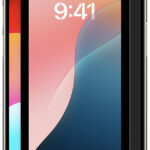Transferring photos from your iPhone to your Mac is a common task for Apple users. Whether you’re backing up precious memories, freeing up space on your phone, or editing your photos on a larger screen, knowing how to efficiently move your photos is essential. This guide will walk you through the best methods to transfer your photos, ensuring your memories are safely moved from your iPhone to your Mac.
Method 1: Utilizing iCloud Photos for Seamless Sync
For users deeply embedded in the Apple ecosystem, iCloud Photos offers a seamless and automatic way to keep your photo library synchronized across all your Apple devices, including your Mac. When enabled, iCloud Photos automatically uploads your original, full-resolution photos and videos to iCloud, making them accessible on your Mac, iPad, and even iCloud.com.
Benefits of iCloud Photos:
- Automatic Syncing: Photos and videos are automatically updated across devices without manual transfer.
- Original Quality: iCloud Photos stores your photos in their original, full resolution.
- Space Optimization: You can choose to keep full-resolution originals on your Mac or save space with device-optimized versions, downloading originals when needed.
- Organization and Edits Synced: Any edits or album organization you make on one device are reflected across all devices.
Setting up iCloud Photos:
To use iCloud Photos, ensure it’s enabled on both your iPhone and Mac. On your iPhone, go to Settings > Photos > toggle on iCloud Photos. On your Mac, open the Photos app, go to Photos in the menu bar > Settings (or Preferences in older macOS versions) > iCloud > check iCloud Photos.
Considerations:
iCloud Photos uses your iCloud storage. Ensure you have enough storage to accommodate your entire photo library. You can check your storage and upgrade your iCloud plan if necessary through Apple ID settings.
Method 2: Transferring Photos via USB Cable – Direct and Simple
If you prefer a direct connection or have a large library and want to avoid iCloud storage usage, transferring photos via a USB cable is a reliable method. This approach involves physically connecting your iPhone to your Mac and importing photos using the Photos app.
Importing Photos to Your Mac Using USB
-
Connect Your iPhone to Your Mac: Use a USB cable to connect your iPhone to your Mac’s USB port.
-
Allow Accessory Connection: You might see a prompt on your iPhone asking to allow the accessory to connect. Tap “Allow” to proceed. This is a security feature to ensure authorized access to your device’s data.
 Security prompt on iPhone asking to allow accessory connection to Mac during photo transfer.
Security prompt on iPhone asking to allow accessory connection to Mac during photo transfer. -
Open the Photos App on Mac: The Photos app on your Mac should automatically open and display an “Import” screen. If it doesn’t, manually open the Photos app and click on your iPhone’s name in the sidebar.
-
Unlock Your iPhone and Trust Computer: Unlock your iPhone using your passcode if prompted. If you see a “Trust This Computer” prompt, tap “Trust” to allow your Mac to access your iPhone’s files.
-
Choose Import Destination: In the Photos app, you can select an existing album or create a new one to import your photos into.
-
Select Photos and Import: Choose “Import All New Photos” to import all photos not previously imported, or manually select specific photos and click “Import Selected”.
 Photos app on macOS displaying iPhone photos ready for import after USB connection.
Photos app on macOS displaying iPhone photos ready for import after USB connection. -
Wait and Disconnect: Allow the import process to complete. Once done, you can safely disconnect your iPhone from your Mac.
Choosing the Right Method
Both iCloud Photos and USB transfer methods are effective for transferring photos from your iPhone to your Mac.
- iCloud Photos is ideal for users who want automatic, continuous syncing across their Apple ecosystem and are comfortable using iCloud storage.
- USB transfer is best for users who prefer a direct, manual method, want to manage storage independently of iCloud, or are transferring a very large photo library.
Ultimately, the best method depends on your personal preferences and workflow. By understanding both options, you can choose the most efficient way to keep your iPhone photos safely stored on your Mac.
